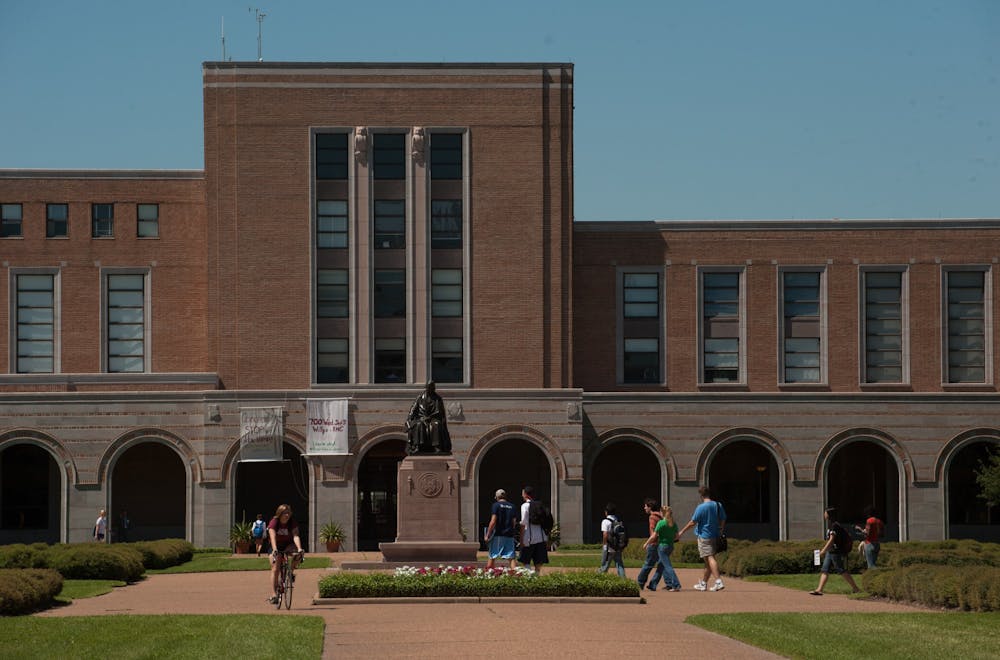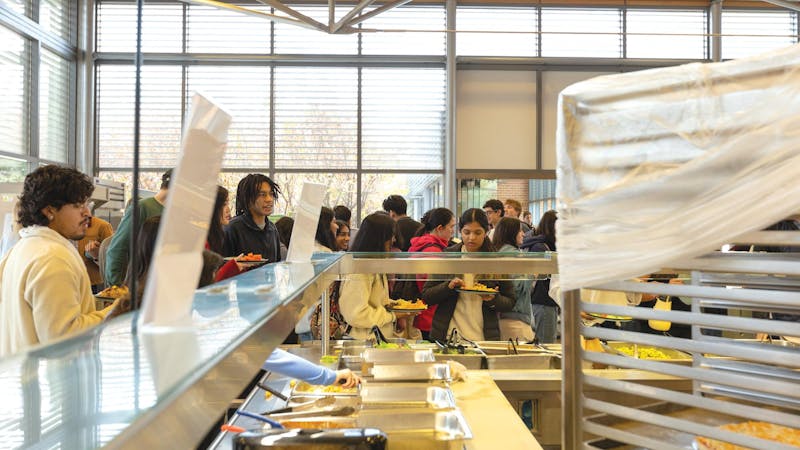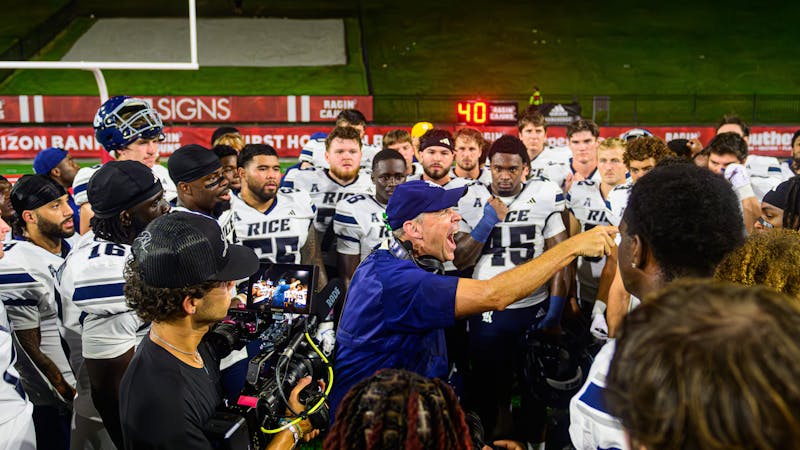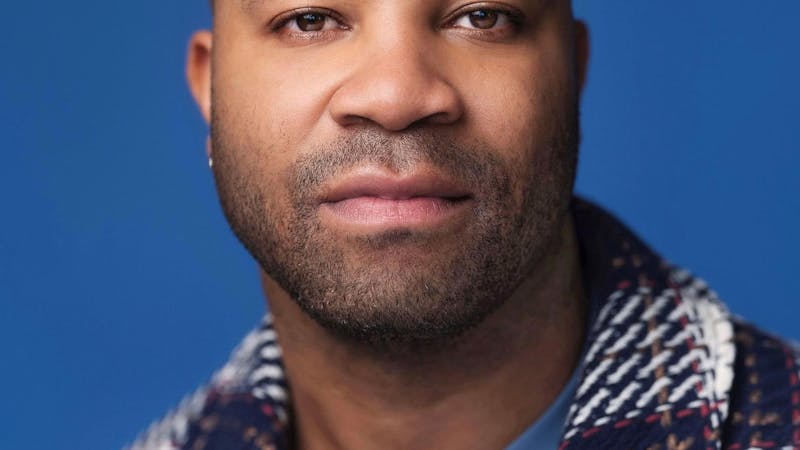Remembering Rice: A Q+A with Andrew Maust

The Founder’s Memorial, more often referred to as Willy’s Statue, is having a moment right now — and not a good one. Almost 3,000 people, including many current students and recent alumni, have signed a petition to remove the statue, on the basis of Rice having upheld the institution of slavery in various ways throughout his lifetime, including by enslaving at least 15 people.
At least.
That number is based on the 1860 census. As Caleb McDaniel, co-chair of the Task Force on Slavery, Segregation and Racial Injustice, recently told the Thresher, “when we use that number, it’s giving us a snapshot of the number of people Rice enslaved at that moment in time.” There may have been more, and there may have been many other ways in which William Marsh Rice upheld slavery and racism in his lifetime.
There has not been much research published on Rice himself beyond work exploring his dramatic death and the establishment of Rice University. The most comprehensive investigation into Rice’s involvement in slavery was done by Andrew Maust (Brown College, ’19) in his paper “Remembering Rice: How Should the University Acknowledge and Represent its Founder’s Past?”
Maust put the paper together in the spring of his senior year under the supervision of McDaniel, and published it in the Rice Historical Review shortly after. He says the paper “never really took off” until recently, when Christina Tan (Duncan College ’20) shared it in a Facebook group for Rice alumni on a post supporting the recently published list of demands by Black students at Rice. The post received over 300 comments.
To hear more about why Maust embarked on his research, what he learned, and what it felt like to have his article shared widely a year later, features editor Ella Feldman sat down with him over Zoom.
This interview has been condensed and edited for clarity. You can read Maust’s paper here.
Rice Thresher: How did you first get involved in this research?
Andrew Maust: It started with a curiosity about William Marsh Rice and what he did during the Civil War. An after-class conversation with Caleb McDaniel — who I had for several Rice history classes — turned from ‘What did he do, really?’ to, ‘Well, if you’re that interested, maybe you should do an independent study class and find out.’ It didn’t begin as a full study on his connection to slavery. I had a lot narrower of a focus, but the more I dug into it, and the more I talked to Dr. McDaniel, I realized, there’s a bigger question here. This story is out there, but it’s buried, and it could really play an important part in shaping what our campus becomes, especially in context with other universities in the last 15 years that have started to reckon with their past ties with slavery and other systematic racism.
RT: What sources did you use to study Rice's history with slavery?
AM: One of the most influential books was actually about Rice’s desegregation. It’s by Dr. [Melissa] Kean. She is a professor who’s been at Rice who wrote about how Rice was the last university of its kind to desegregate. There’s a little bit of shame attached to that — how come we were so far behind everybody else? And now we’re at a place where we can be a leader in addressing our past. Because there aren’t very many universities that were founded after the end of the Civil War that have addressed these histories, even though there are connections that exist.
As far as actually getting into source material, one of the most impactful things was going through Rice’s ledger books, which are available in the Woodson Center, and being able to actually see his exportation of cotton, as well as ledger entries on money he paid to rent out other people’s enslaved workers, and being able to actually see the physical impact in writing, preserved, that he — or one of his employees, or potentially one of the enslaved workers he had that he trained to do his books — actually wrote down.
RT: You described the story of Rice as being out there but “buried.” Can you tell me what you mean by buried? What did you find that pointed to this story but didn’t fully tell it?
AM: There’s only one major biography of Rice that covers his entire life, ‘William Marsh Rice and His Institute’ based on the work of Andrew Forest Muir, a Rice graduate and former professor. That is the only actual biography that tells [Rice's] whole life. All the other scholarship out there is about his death, the founding of the university, but nothing gets into his early life, really, or his business dealings. We know he was a slaveowner, we know that he participated in these businesses, the original biography is there, but it’s not talked about. On the university’s website, when it describes who Rice is, it says he was a businessman. It doesn’t say what business he was in, it doesn’t say how he made his money, just that he chartered the university and left money for its founding. There’s erasure of that history in publicly accessible places online, in our verbal retellings — tour guides don’t talk about it when we pass Willy’s statue. So it’s been a lie of omission, where we know the facts, but we have not shared them widely with the Rice community.
RT: Tell me about this biography that you based so much of your work on. What attitude does it take to the fact that Rice owned slaves?
AM: So one of my critiques of that work is that it paints Rice in a very positive light. I think part of that bias is because Andrew Forest Muir, who wrote it, went to Rice. He taught at Rice, Rice was a big part of his life, and so some of the phrasing speaks positively of William Rice, as opposed to being purely fact-based. He softens his approach. One example is that the book very euphemistically talks about how he didn’t engage in plantation slavery even though he had the option to, not wanting to deal with the issues of labor, which basically is a euphemistic way of saying that Rice didn’t want to do plantation slavery because it would be too hard to keep a large slave work force. So there’s little language details where the original work softens the blow. It has most of the information that was available at the time, so it’s not missing information, but the way it’s presented is positive towards Rice. Because he was the patriarchal benefactor of the university, I think it tries to keep him a little bit in that light.
RT: The university and tour guides describe Rice as a businessman, point blank. How would you describe the kind of business he was in?
AM: Initially, he started as a general store owner. He was purely importing goods from the north, from Europe, and selling them to the people of Houston. But while he was in the area, he expanded into becoming a lending institution. At that time, the Republic of Texas and later the state of Texas did not have banks. And so, in order to lend capital and to grow, it was private businesses that were doing all of the lending. So Rice lent money to people who were buying slaves, who were creating plantations. In that sense, he was engaged in the slave economy at the time by lending money, as well as eventually getting into cotton exportation. So that helps catapult his wealth. It was a very large business and he was one of the richest men in Houston. With an estimate at that time, his worth was about $400,000.
RT: And what do we know about the 15 people he enslaved?
AM: I actually was not able to find much information. We don’t know how he used them. Most likely they were working in his house, they also might have been working in his business. In my research I was not able to find out what happened to them after the Civil War, and where they ended up. That’s something that, if the records are there, will take a larger historical study.
RT: Were you able to find out anything about who Rice supported in the Civil War?
AM: This is one area that I found majorly lacking in the original biography. All that was said by Andrew Forest Muir was that Rice was a Unionist. It didn’t delve into any of his personal beliefs or what that really meant. I did a little more research into that, and what we’re remembering is not quite the truth. What Rice likely believed would align with something called the Constitutional Union party, which was a Southern political movement that didn’t want secession, but also didn’t oppose slavery. As a businessman in the south, he relied on having the north to buy goods to then resell in his general store, but then also relied upon the slave economy to export his cotton, so he really would’ve wanted the United States to stay together but keep slavery.
RT: In your paper, you push for the creation of a group dedicated to studying our university’s entanglement with slavery. That happened with the creation of the Task Force on Slavery, Segregation and Racial Injustice. Beyond that, how would you like to see the university reckon with the facts about Rice’s life that you found, and the fact that he was an enslaver? What would you like to see more immediately?
AM: The first thing I would like to see is some contextualization efforts. I think it is terrible that nowhere on the website, nowhere in our verbal histories, do we talk about this. We have the information, and a very easy first step is to make it widely known. To be upfront and honest about where the university came from and who William Marsh Rice was. And this is an immediate step that even precedes some of the discussion going on about, what do we do with Willy’s statue? Without even consulting any other groups, I think the administration can take that as an easy first step, so that way we’re not hiding it anymore. It’s out in the open and we can start to confront it.
RT: Through your research, did you form an opinion regarding the removal of the statue?
AM: I do have an opinion, but I’m not sure right now I’m the best person to be talking about that. I was hoping that the university would be ahead of this, that the Task Force would be reaching out to student groups, and especially students of color on campus who are affected by this, to get their opinion. But it’s happened organically. Some of the online petitions, the demands for the university — those students that are putting those forth are the ones, I think, that need to be up front and center and the people who we need to be listening to at the moment. Because organically, they are making themselves heard, and it would be a disservice if the rest of us didn’t stop for a minute and take a listen.
RT: How did people react to your paper when you published it in 2019? Did you have any strong reactions?
AM: It never really took off. I got one or two Facebook messages from friends who saw it. But up until recently, I thought it was probably just going to gather dust on a shelf somewhere.
RT: What has your involvement been in recent discussions in the Rice alumni group on Facebook and other platforms where your paper is used to make arguments?
AM: I’ve largely tried to stay out of it. I don’t really post on Facebook that often, and I think it would be a little disingenuous now for me to start taking a front row seat. I’m happy to take a step back and let others drive. But I am trying to be careful and helpful and insert myself when I see other people pulling quotes from my article or using my article to further views that I don’t think are historically accurate.
RT: Do any examples come to mind? Were there any moments where someone egregiously quoted something from your piece and you really felt like you had to go in and correct?
AM: There was one where someone pulled out a few selected quotes, and said, ‘William Marsh Rice wasn’t perfect, but he really wasn’t a bad guy who preserved slavery.’ That one rubbed me the wrong way because he very clearly served on the Houston slave patrol, he bought slaves, he lent money to allow people to start plantations. So he was a very active community leader, a wealthy community leader who preserved and grew slavery in Houston. There’s no mincing words, it’s very clear that he did that. My paper took a very soft view. I did not put words in his mouth, if I could not find a view I would not ascribe words to him, but it’s very clear what his actions were. Let’s not soften it.
More from The Rice Thresher

Over 1,000 students petition against new meal plan
When Konstantin Savvon opened the Housing and Dining email announcing the new unlimited meal plan, he was instantly concerned about the impact on off-campus students like himself.

Rice football wins season opener under new coach
For the first time since 2018, Rice football opened its season with a victory. Scott Abell was soaked with yellow Powerade following a 14-12 win on the road Saturday against the University of Louisiana at Lafayette, which won 10 games and made it to the Sun Belt Conference championship last season.

Acting like an athlete: Rice basketball alum takes on Broadway
Underneath Chadd Alexander’s Broadway costume, there’s ankle tape and wrist braces — same protective gear he wore as a walk-on basketball player at Rice, though now he’s performing eight shows a week in the ensemble of “Harry Potter and the Cursed Child” instead of running conditioning drills in Tudor Fieldhouse.

Please note All comments are eligible for publication by The Rice Thresher.